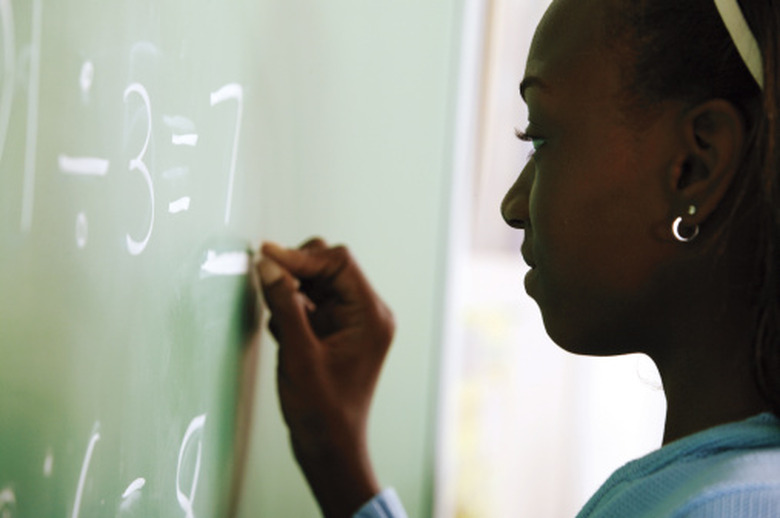People use fractions, mixed numbers and decimals often, without even thinking about it. For instance, when you see a sale price, you might mentally calculate the savings by transforming a percent into a decimal, then into a price. Cooks use fractions when calculating recipes. In fact, much of life involves fractions, which may be expressed as a mixed number – indicating wholes and parts of a whole – or as a decimal. Take 5/6 as an example; then you can generalize the process to other fractions.
1. Divide Improper Fractions, if Present
Convert the fraction 5/6 to a mixed number by adding the understood number in front of the fraction. A mixed number is any whole number with a fraction portion. If the upper number – the numerator – were bigger than the lower number – the denominator – also known as an improper fraction, you would divide the denominator into the numerator and calculate how many times it goes in, resulting in a whole number. The remainder, what is left after creating your whole number, is then expressed as a fraction over the original denominator. But 5/6 is a proper fraction with a larger denominator. In this instance, there is an understood “0” in front of the fraction. Expressed as a fraction, 5/6 = 0 5/6.
2. Write the Mixed Number
Write 5/6 as the mixed number 0 5/6. Leave the 0 off unless specifically notating a mixed number, however.
3. Convert the Fraction to a Decimal
Divide the numerator, 5, by the denominator, 6, to express the fraction 5/6 as a decimal. You can do this on either a calculator or using long division by hand. The answer will equal 0.83333 with the number 3 repeating endlessly. This is known as a repeating decimal.
4. Write the Decimal Out
Write the answer as “0.83” with a bar over the 3, representing a repeating number. Alternatively, in some cases you may round the number down or up – although this will be less accurate – or write the 3 out to a given decimal place. For instance, rounded down, the answer is 0.83 or even 0.8; written to three decimal places, the answer is 0.833.
5. Convert as a Fraction
Use the rules for converting a fraction to a decimal by finding a number that, when multiplied by the denominator, results in a multiple of 100. Multiply both the numerator and denominator by this number, then write down the numerator, inserting a decimal one space from the right for each zero in the denominator. If the number will not evenly divide into 10, 100, 1,000 or higher, as in 5/6, approximate the number to multiply with. For instance, use 17 to multiply 5/6. The result is 85, and there are two zeros in 100. So, the answer is 0.85 – fairly close to the actual answer. Notate properly to answer.

